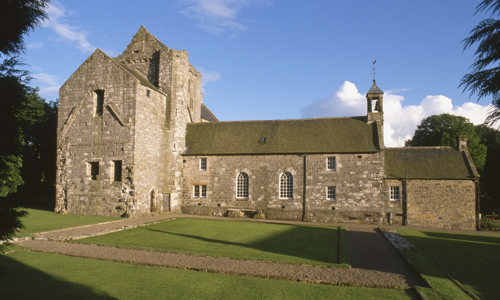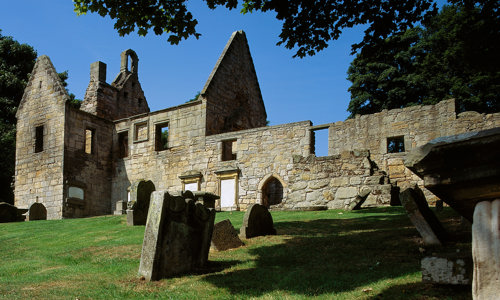History
Home of the saints
Culross is said to have been the site of a Christian community headed by St Serf and of which St Mungo was a member. The discovery of early Christian stones dating to the AD 700s or 800s at this site supports this tradition.
Culross Abbey was founded by Malcolm, earl of Fife in 1217-1218 as a daughter house of the Cistercian monastery at Kinloss. The abbey church was built soon after, with work continuing into the 1300s.
After the Reformation of 1560, the choir and presbytery of the Abbey Church was taken over as the Parish Church and retains an active congregation.
Changing with the times
The abbey buildings underwent changes throughout its life. Around 1500, Abbot Andrew Masoun had the nave demolished and the choir rebuilt. He also added a new tower over the rood screen as the new west end of the reduced church. The abbey retained its reputation for being a producer of fine books, receiving an order from Stirling Castle’s Chapel Royal.
After the death of Abbot Stewart in 1513, possibly at Flodden, the abbey was headed by a series of commendators (lay administrators) appointed by the crown. Records show the abbot and convent pledged lands in return for a large loan for the repair of the buildings in 1538-9. A similar loan was negotiated seven years later for the upkeep of the monastery and ruinous houses of the regulars.
But with the Reformation of 1560, monastic life came to an end, and the domestic buildings of the abbey were largely left to fall into ruin.
















